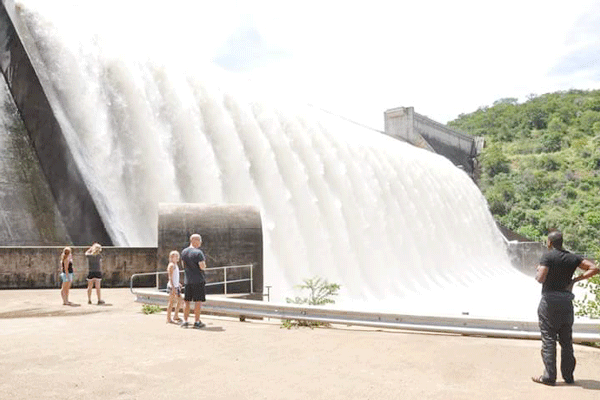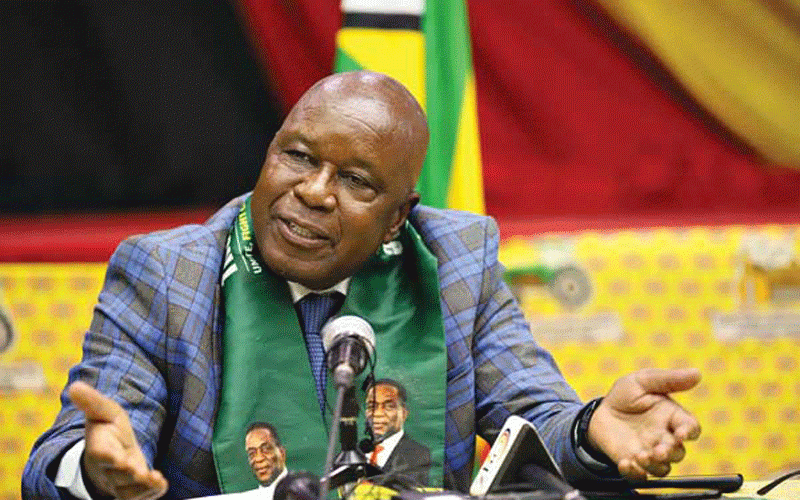
Until a fortnight ago, Matabeleland North villagers had very high hopes of a bumper harvest after years of heart-breaking crop failures.
by PAIDAMOYO MUZULU

On the other hand, Bulawayo residents were bracing themselves for another year of rationed water suppliers as some of the city’s six dams held water that was below 50% of their capacity.
However, there was a dramatic change of fortunes for the two provinces in less than a week after the downgraded Cyclone Dineo reached Zimbabwe’s shores.
Cyclone Dineo, which started off the coast of Mozambique in the warm Atlantic Ocean, left a trail of destruction in Mozambique, southern parts of Zimbabwe, Botswana and South Africa.
For villagers in Tsholotsho in Matabeleland North, the cyclone, which had been downgraded to a tropical storm by the time it hit the hinterland, was like a slow motion third rate movie.
Tsholotsho North MP Jonathan Moyo said of the disaster: “On Saturday [February 18] night villagers in ward 6 areas of Mahlosi, Mahlaba, Mbanyana, Mbamba and Maphili woke up in the middle of water.
“Gwayi River had burst into fields along its banks and water spilled into fields along the river banks.”
- Chamisa under fire over US$120K donation
- Mavhunga puts DeMbare into Chibuku quarterfinals
- Pension funds bet on Cabora Bassa oilfields
- Councils defy govt fire tender directive
Keep Reading
Amidst the chaos wrought by the floods, the villagers had the shock and confusion of Air Force of Zimbabwe helicopters hovering over their destroyed village on a rescue mission.
“There was massive destruction of homesteads, crops and livestock. All villagers were marooned and airlifted to Sipepa [clinic] by Air Force of Zimbabwe,” Moyo said on Twitter.
When the count was finally done, 855 people were found to have had their lives completely changed by the storm for the worse.
School-going children no longer had a school and their parents were pondering what to do next. The salvation lied in the hands of a cash-strapped government and development partners, commonly called donor agencies.
International organisations such as Red Cross, MSF, IOM, German Agro Action and Plan International were the first to assist the poor villagers.
They brought in tents, food, clothes, cooking utensils and medicines, among other things.
The government, according to Moyo through the Department of Social Welfare, donated 39 bags of maize and eight bags of rice while the Ministry of Health and Child Care provided administration facilities and space to set up a camp at Sipepa Clinic.
Education for the affected children was changed overnight and they have now been temporarily relocated to Sipepa Primary School.
“Mahlaba Primary School has temporarily closed as the whole area is flooded and villagers and school-going children were evacuated.
“Pupils from Mahlaba Primary will be learning at Sipepa Primary School for the time,” Moyo added.
“There are pupils from Mathupula Primary who were evacuated together with their families.
“They are also going to be at Sipepa Primary School for the time although their school was not affected.”
It goes without saying that Sipepa Primary School, which has an enrolment of 342 pupils using six classrooms and inadequate furniture, teaching and learning materials and staff accommodation, is feeling the strain.
To ease that pressure, Moyo has sent an SOS to donor agencies for support that includes eight tents with one tent accommodating a class, eight movable boards, stationery, textbooks and furniture, among other necessities.
The whole community will for now depend on food hand-outs as their fields were washed away.
“Crops were destroyed which will reduce their harvest to zero,” the minister added.
“The household economy has been negatively affected as well, with income now going to be used to buy property destroyed by floods.
“The affected people require food assistance, which should start as soon as possible and extend up until the situation improves, which is next season.”
The families will soon have to start picking up the pieces and rebuild their lives but that is going to be hard as the country continues to muddle through the economic quagmire that started over a decade ago.
Moyo said: “A permanent solution is required and it will involve relocating the community.”
Kilometres away, Bulawayo welcomed the heavy rains that will for the next three years guarantee water supplies. The city has over the last two years been rationing water as supplies continued to dwindle.
One of the city’s dams, Lower Ncema, was last year decommissioned as water levels had dropped to a pitiful 4% full.
Cyclone Dineo was a blessing to Bulawayo as residents last week witnessed a spectacle of the dam spilling for the first time in 17 years.
Many residents had to drive to the dam wall and behold the wonder that they never thought they would witness in their lifetime as Bulawayo perennially receives little rainfall.
The city council tweeted: “We now have enough water to last till 2020.”
The Zimbabwe National Water Authority said most dams continued to record increases in water levels.
“A majority of dams are now full and spilling. The national dam level average is now 64,8%.” Zinwa said.
To the delight of Bulawayo residents, it added: “Mtshabezi 100, 1%, Zhove 105%, Upper Ncema 104,4% and Lower Ncema 102% full after the recent rains.”











